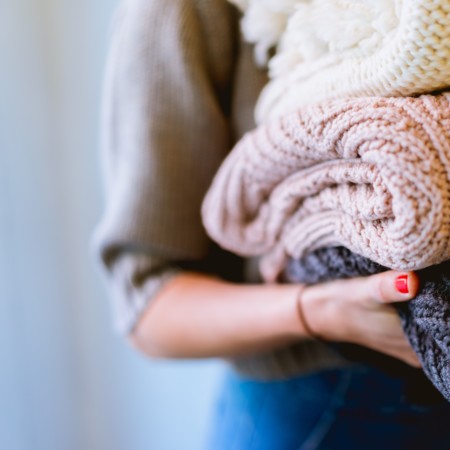Over time, it’s just a fact that your clothes will wear down. Fabrics will fray and loosen. In some cases, the colours might even fade as well. That’s just the way things are. You can’t expect your clothes, especially the staples you wear day in and day out, to last forever.
With that said, it’s definitely possible for you to extend the life of your clothes by quite a bit. Essentially, what you want to do is just to take good care of them. By extending their life, you’ll also be able to get your money’s worth.
Is that something that you’re interested in? If so, be sure to read on – we’ll be sharing some of our best tips below!
First up, here’s how to make your clothes last longer…

For environmentally conscious fashion lovers, increasing the lifespan of their clothes is a key step in building an ethical and sustainable wardrobe. Not only does this save us time and money, it cuts down on needing to buy more of the same items over and over again, helping to reduce our carbon footprint.
As it turns out, there are several things that you can do to ensure that your clothes will last a long time. Follow along and you’ll be glad you did!
Tip #1: Buy good quality clothes to begin with
Poorly made clothing with thin material wears out faster and requires you to spend time and money either mending or replacing it.
If you’re tired of clothes that bobble, fade and fall to pieces after just one season, it could be time to start shopping a little more strategically and invest in quality clothes that look good and last longer.
It’s totally possible to buy quality clothes that are well within your budget and can stand up to regular use. For example, having a couple of nice coats that fit well, make you look good, can transition into different seasons and cost a little bit more is better than having seven coats that are cheap and cheerful, but ill-fitting and bound to fall apart after a year.
In the same vein, spending €150 on a plain white t-shirt is a bit much, but there’s nothing wrong with spending $50 on a three-pack of staple t-shirts you know you can rotate on a regular basis.
Pro tip: When you’re buying new clothing items that you want to stay looking good after repeated washes, we recommend sticking to natural fibres, like wool, cashmere, cotton, cashmere, linen and silk.
Tip #2: When it comes to washing your clothes, less is more

Before you automatically toss your worn clothes into the laundry basket after wearing them once, be sure to inspect them and see if they truly need to be washed. Gym gear, for example, will warrant more regular washing than jeans or jumpers, which will likely have been layered over a cotton t-shirt.
Knowing when and how to wash clothes varies from garment to garment, but don’t be afraid to wear things more than once in a row. Here’s roughly often you should wash all of your clothes:
Outer layers: Jumpers, hoodies, sweatshirts and cardigans don’t typically come in direct contact with sweaty skin and can get away with being washed infrequently (so long as you don’t get coffee all down the front!) We recommend washing these every ten wears or so. Coats can be washed once every season.
Bottoms: Denim is an incredibly durable and hard-wearing fabric that doesn’t need to be washed very often – once a month for regularly-worn jeans is totally fine. Turn them inside out and throw them in the washing machine with your other dark clothing on a cool wash.
If you own skinny jeans with a high spandex content, you might notice they stretch out after a few wears and will need a spin in the washing machine to help maintain their shape. Tailored trousers, like chinos, can easily last at least five wears before they need to be washed. Cotton leggings? We say three wears is totally fine.
Tops: You can easily get two wears out of anything that’s worn next to your skin, such as your cotton t-shirts and shirts, so long as you don’t perspire heavily (or if you do, you wear armpit shields). We recommend keeping an eye out for any yellow stains from your deodorant or body oil transfers around your sleeves or collars as these need to be pre-treated before going in the washing machine (more tips on that below!)
Side note: Reducing the amount of washing you’re doing every week is a great way to save on your energy bill. Not to mention, less frequent washing is a great timesaver. As we all know all too well, the process of pre-treating stains, sorting clothes, washing, folding then putting it all away is a tedious one.
Tip #3: Pay close attention to the care labels on your clothes
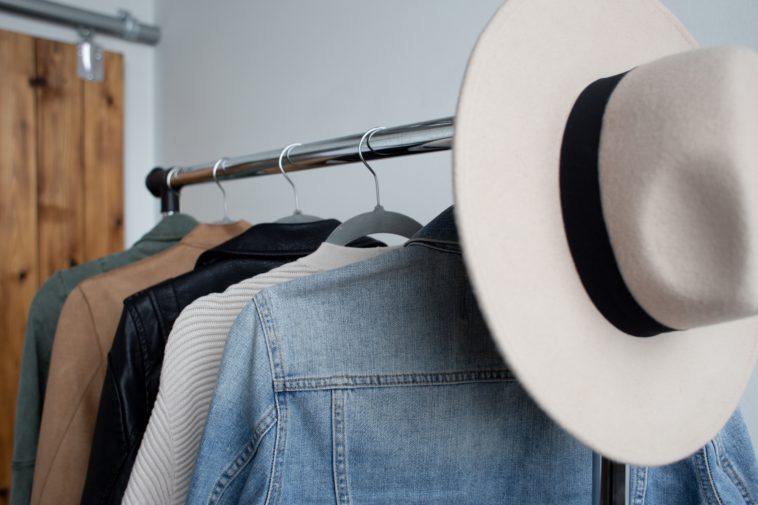
Be sure to pay special attention to the care labels on your clothes for proper washing instructions. Most clothing will have specific laundry treatments listed on the tags.
Tip #4: Do not (we repeat, do not) overload your washing machine
Wondering why your clothes still smell bad after being washed? Overloading your washing machine could well be the culprit. Don’t ever fill your washing machine to the brim – always go with three quarters full, max.
Clothes that are packed too tightly in the washing machine will end up wrinkled and only partially clean. Why? Your clothes need a bit of breathing room to move around in the drum and get enough suds working throughout. Piling too many things in the machine leaves less room for water, meaning the water won’t circulate properly.
Tip #5: Go easy on the tumble dryer
You know all that fluff that accumulates on the inside of your tumble dryer? That’s actually made of up little bits of your clothes (oh, the horror!)
High heat can also break down the fibres in your clothes and cause them to shrink and fade. It’s best to hang dry your clothes where possible and if you do have to use the dryer, use the lowest heat possible. And in a similar vein to our tip before, overloading the dryer just means things will take longer to dry… and come out a whole lot more wrinkled than they went in.
Tip #6: Treat stains as soon as possible
Stains! They’re the worst. It’s a fact that at some point or another you’ll end up with a nasty stain on your shirt or pants. To have the best chance of getting rid of it for good, you’ll need to pre-treat the item of clothing as quickly as you possibly can either with a stain remover or normal washing detergent.
Sometimes a good cold water soak is all it’ll need, but to knock out more stubborn stains, you might need to use a more targeted stain-removal method (we’ll go into this in more detail below!)
Tip #5: Use the right hangers

Wire (aka the dry cleaner freebies) or plastic hangers can stretch the shoulders of your clothes, so replace them with wooden or padded ones.
Make sure that when you’re hanging up shirts that you’re hanging from the bottom rather than the top (otherwise you could stretch out the neckline) and that the seam is perfectly in line with the edge of the hanger. Heavy coats tend to keep their shape better on thicker suit hangers no more weird shoulder puckers here!)
While anything that’s wrinkle-prone should be hung up, the same doesn’t go for any items of clothing that can easily be stretched when hung, like heavy knitwear, cashmere, lycra or jersey pieces.
Tip #6: Use a clothes razor on any bobbles
Even the best quality wool and cashmere pieces in your wardrobe will become prone to unsightly bobbling over time. A clothes razor along with a lint roller will have them looking like new in no time at all!
And now for some popular laundry-related questions and answers…
1. Why are some clothes marked as dry clean only?
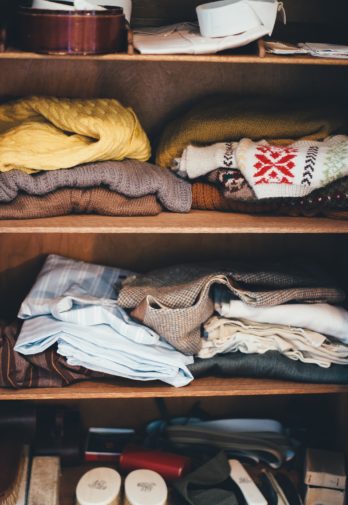
We’ve all been there. You’ve bought something new, worn it and then gone to wash it, checked the label and felt like crying because it reads “dry clean only”… meaning another expensive and inconvenient trip to the dry cleaners.
As certain types of fibres could be damaged if washed in water, the dry cleaning process involves using chemical solvents to clean the garment instead. So the term dry cleaning is a bit of a misnomer, actually. Your clothes are still getting wet, just not with water.
But here’s the truth about dry clean only care labels – clothing manufacturers are required to include at least one cleaning method, which means they tend to take more of a conservative approach and recommend the method that’s least likely to result in customer complaints and returns. This means that everyday items like silk blouses, cashmere jumpers and linen dresses frequently end being flagged as dry clean only, when that’s not necessarily the best method for cleaning them.
Not sure which clothing items should you always dry clean and which ones can you get away with washing at home to save money? It’s worth taking a look at the care tag to see what your supposedly dry-clean-only item is made of, because it could actually be better to hand wash at home. Fabrics that hold up well to hand-washing include:
- Linen
- Silk (yep, you can actually wash silk clothes at home!)
- Cotton
- Cashmere
- Nylon
- Acrylic
- Polyester
You should also take into account whether the clothing item was expensive or other special to you – remember that any at-home hand-washing mishaps are usually irreversible, meaning the item is ruined forever.
Not all materials can be hand-washed, either – take leather, suede and velvet, for example, in addition to delicate lace and embellished, sequined or beaded clothing items. More structured clothing pieces, like a tailored suit, pleated skirt, blazer or coat, are also better off bring dry cleaned, as these tend to lose their shape quickly in water.
Lined garments should be confined to the dry cleaners as any shrinking will cause the lining to show. However, you can always spot clean the underarm linings to extend the time between dry cleaning sessions.
2. How do I hand-wash clothes properly?
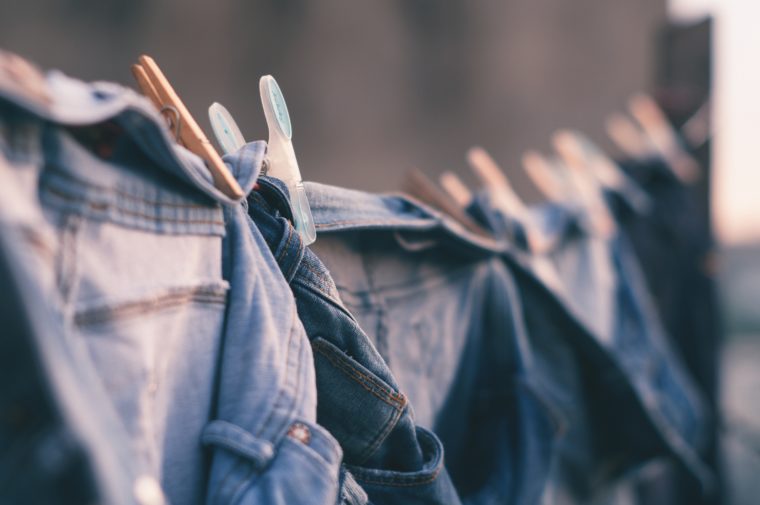
Here are some general tips you should follow when hand-washing garments at home:
- Before you attempt this at home, do a test for dye transfer on an inconspicuous part of the garment. All you have to do is rub a wet cotton bud on the inner seam – if the colour comes off onto the cotton bud then it might need the dry cleaning treatment.
- Always use cool (cold water can “shock” the fabric, while warm causes it to shrink up) water and a gentle laundry detergent, like Woolite.
- Wash the clothing item on its own, as rubbing against other fabrics can cause fraying.
- 4. While we recommend washing by hand, many washing machines come with a delicate or hand-wash cycle. If you decide to go this route, then proceed with caution, it’s best to pop the item into a mesh laundry bag to prevent the fabric from getting agitated against the drum. Do not spin the item after!
- Don’t wring the item dry – lay it out flat on a towel after you’ve finished rinsing it, roll the towel with the piece of clothing inside and gently squeeze it to get rid of any excess water.
- At this stage, you can transfer the garment to a dry towel and leave flat to dry.
3. How do I get stains out of my clothes?
Getting grease/oil stains out of clothes:
Ever accidentally splashed olive oil on your favourite shirt? Us too – getting oil on your clothing is one of the most common wardrobe mishaps.
- As with all other stains, you should act quickly when it comes to grease and oil spills on your clothes, as these can set permanently.
- Use kitchen paper or sprinkle some baby powder on the stain to absorb as much of the excess oil.
- Pre-treat the oil stain with a little bit of washing-up liquid.
- Wash the item as normal.
- Be sure to double check the oil stain has lifted before you heat dry your clothing item (heat will set a stain like no other!)
Cleaning chewing gum from clothes:
Removing chewing gum from clothes is surprisingly easy – all you have to do is pop your item in a freezer bag and leave it in the freezer for a few hours, until the chewing gum hardens. You should be able to peel the chewing gum off with having to use much force.
Washing lipstick/foundation out of clothes:
As before, acting quickly here is key:
- You’ll want to use something blunt to scrape off any excess lipstick or foundation residue on your clothing. This will stop the stain from spreading further when you try to remove it.
- Pat (don’t scrub!) the stain with some rubbing alcohol or hairspray and a damp, white cloth. If the stain persists, then you might have to resort to a more traditional chemical stain remover, like Vanish (just check the care tag first to see whether this is safe to use). Another effective stain removal method for oily, waxy makeup items? Washing-up liquid!
- Rinse the item with cold water (remember, cold water lifts stains, while warm sets them in even deeper) and wash as normal.
Getting permanent marker stains out of clothes:
Always aim to treat a permanent marker stain as quickly as possible, ideally before the ink has dried in. Apply a good layer of hairspray or alcohol to the stained area and leave it sit for 10 at least 10 minutes.
At this point, you can pop the piece of clothing into the washing machine with a stain-busting washing detergent. Once the cycle’s done, be sure to check the stain is completely gone before you tumble dry the item.
How to get rid of underarm sweat stains:

Underarm sweat stains aren’t actually caused by sweat alone – they occur as a result of a chemical reaction between the salts in your sweat and the aluminium in your antiperspirant that build up over time. Don’t be tempted to use bleach, as it won’t do anything to shift these kinds of stains. Here’s what to do about those persky underarm stains on your cotton shirts and t-shirts instead:
Option 1: Washing-up liquid and hydrogen peroxide
Use one part washing-up liquid, one part hydrogen peroxide and one part water and immerse your underarms in the mixture for at least half an hour. These two are a really effective combo when it comes to sweat stains, as the washing-up liquid breaks down oils and grease left on the fabric, while the hydrogen peroxide is great at lifting out stains. If the stain is a stubborn one, then add in some baking soda and give it a good scrub.
Option 2: Lemon and sunlight
There is another natural way to remove these pesky sweat stains on white clothing items. One is by squeezing lemon juice on sweat stains and leaving them out in the sun for day day.
Pro tip: Prevention is always better than cure when it comes to underarm staining. Try applying a little less deodorant and letting it dry for a minute before putting your shirt or t-shirt on. And be sure to turn your clothing items inside out before washing them, as this will help remove more of the deodorant, reducing the chance of build up over the course of repeat wears.
4. How can I refresh my clothes… without actually washing them?
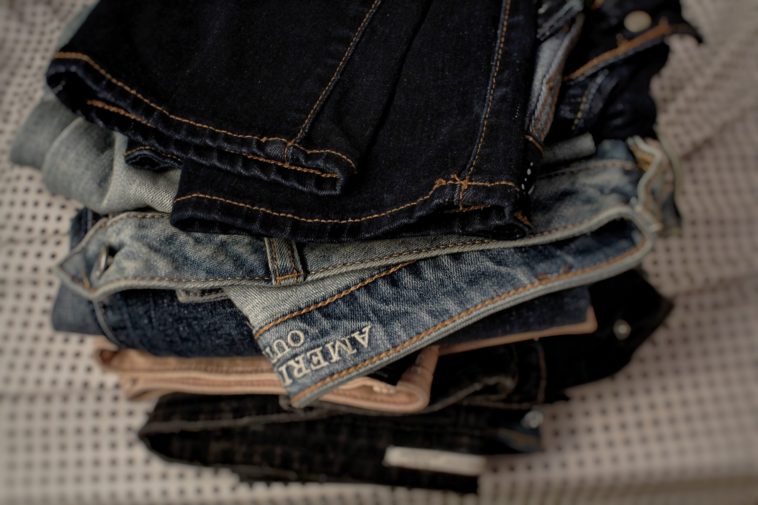
“Do garment steamers clean clothes?” is a question that seems to crop up a lot online. And the truth is, yes! Steaming your clothes isn’t just an excellent way to remove wrinkles, it also kills the bacteria that causes odours.
Just be sure to avoid steaming any stained clothes as the heat of the steamer will cause the stain to set in.
5. Will my viscose clothes shrink in the wash?
Viscose is a divil for shrinking, so even if the manufacturer’s instructions stipulate a viscose clothing item can be washed in up to 40 degree heat, we say to wash a gentle cycle on cold, just to be on the safe side.
Viscose clothes should never go in the dryer either (don’t say we didn’t warn you!) so hang these items to air dry.
6. Can I fix cashmere that I’ve shrunk in the wash?
That heart-sinking moment when you’ve put your fancy cashmere or merino-wool jumper in the washing machine and it’s now small enough to fit a four year old… been there! But all might not be totally lost, so don’t throw your favourite cashmere piece out just yet.
Try this method to restore your wool jumpers:
- Fill up your sink with lukewarm water and mix in a ½ cup of hair conditioner or Woolite.
- Pop your jumper into the sink and let it soak for half an hour. This will help loosen up the shrunken fibres.
- Use the same rinsing and towel-rolling method we recommend for all hand-washed items above.
- At this point, you’ll want to move the jumper over to a dry towel (it should still be damp at this point). Start by gently stretching the jumper back to its proper shape. This will take some time, depending on how badly it shrunk.
- Make sure to keep it flat as the item dries. With any luck it will still be wearable.
7. How can I make faded clothes look like new again?
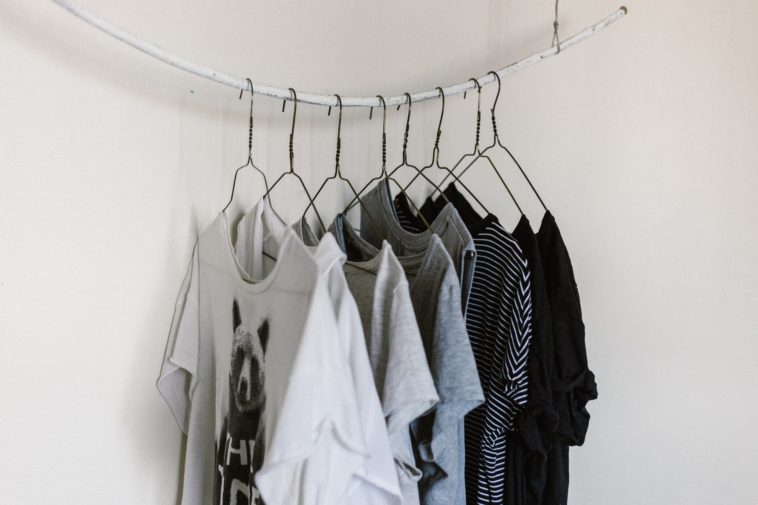
Sometimes, your clothes can look a little dull for a little-known reason: detergent build up! All you have to do here is pop your faded items into the washing machine with a ½ cup of vinegar.
You can also try getting clothes back to their original colour with some fabric dye – this works especially well for faded black clothing items. A good preventative measure against continued fading would be to turn your clothes inside out before washing.
8. Can I wash black and white clothes together?
Resist the urge! You might be able to get away with this in a pinch if you’re washing everything on cold and using colour run prevention sheets to minimise colour transfer, but it’s not a good idea if you want your white clothes to stay bright over time.
So, yes, we’re in favour of separating lights and darks. But we also recommend you take it one step further by separating your clothing so that you’re washing the same fabrics together. Mixing and washing synthetics and cottons together can cause abrasion, resulting in greater wear and tear on your clothes over time.
9. How should I wash dark clothes in the washing machine?
This one’s simple: As darker clothing items have a tendency to bleed and fade over the course of repeat washes, the golden rule here is to wash dark items separately, on a short, cold water cycle.
10. Is it better to wash white clothes in hot water?
Want to stop your whites from looking a bit dingey? The hotter the water you wash them in, the better. Just be sure to check the instructions on the care tag as the maximum heat will be stipulated. Adding some baking soda in with your detergent can also help keep your whites looking nice and bright.
11. How should I wash my linen clothing items?
While linen fabrics are usually durable enough to withstand being put on a cold, delicate cycle, you might want to exercise caution and use our hand-washing method above.
12. Can I put my runners in the washing machine?
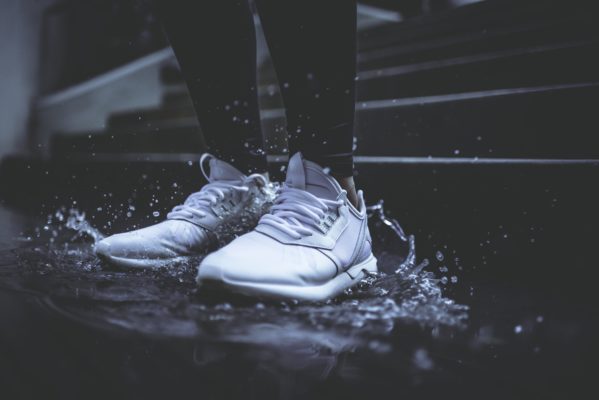
Cleaning runners by hand is a bit of a painful process, but certain types of runners are indeed capable of being bunged into the washing machine. Just be sure to consult the washing instructions on the care tag first. Ideally, you’ll want to remove the laces and put your runners inside a mesh bag to stop the runners from getting caught on the drum and ripping.
Prop tip: However much you might be tempted, it’s never a good idea to dry runners in the tumble dryer. Nothing will melt the glue holding your beloved Nikes together quite like the high heat of the dryer. Leave them outside to dry, preferably in direct sunlight, instead.
13. Why do my gym clothes still smell after washing?
Noticed your workout gear is smelling a little funky of late? This is usually as a result of a build up of odour-causing bacteria from your sweat.
Again, try turning your gym clothes inside out before washing them, as the sweat tends to accumulate on the inside of these items. If possible, it’s good to let your sweaty items air out a bit before they’re put into the laundry basket. Best case scenario, though, you wash your gym gear as soon as possible after wearing.
Thanks for reading our guide on how to take care of your clothes! Remember, Very has the latest clothes and footwear from your favourite brands, including those must-have essentials that will get you from work to weekend in style.
And to us, no order is complete until you are fully satisfied, which is why we make deliveries and returns free and easy. Happy shopping!

